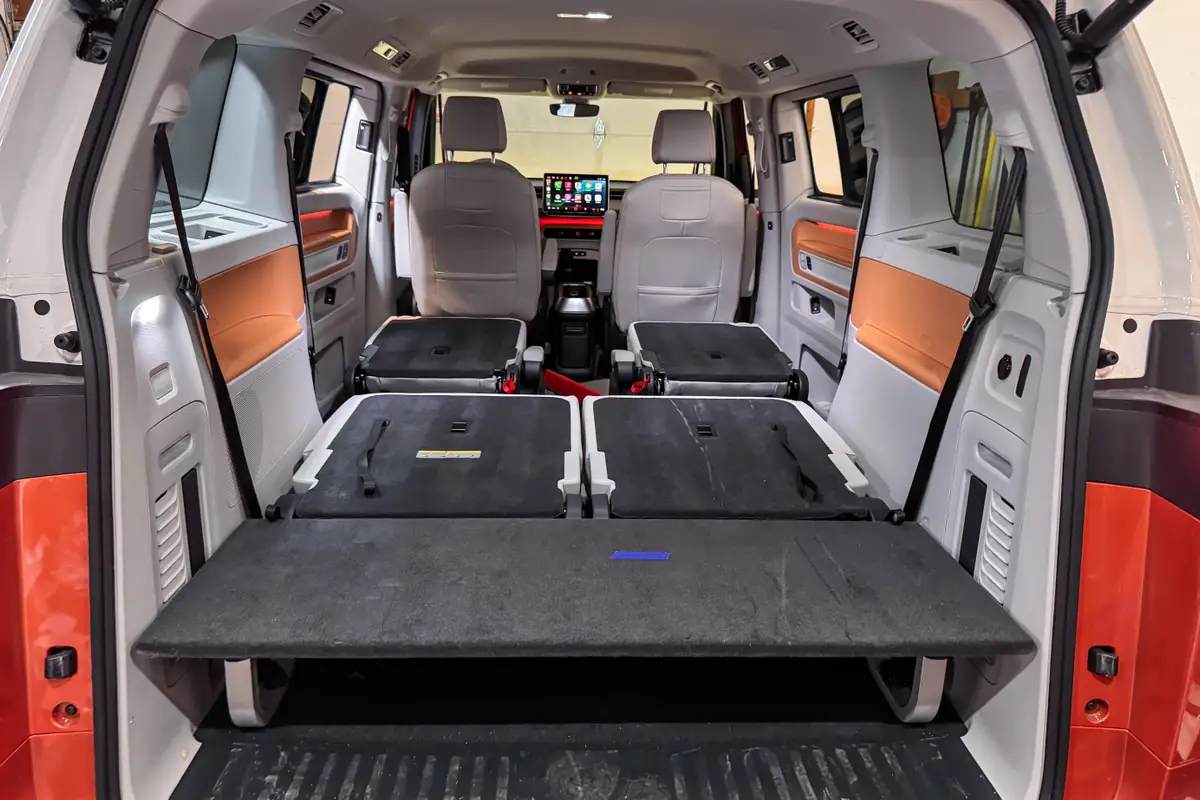Pickup Trucks 101: Why Weight Capacities Are Important

Have you ever wondered what all those letters and numbers mean on the door tag of your pickup truck? Have you ever overloaded your vehicle so that the rear axle was touching the bump stops? How do you know how much weight you can put into your vehicle or how heavy a trailer you can pull?
Knowing a pickup’s gross axle weight rating, gross vehicle weight rating, gross combined weight rating, the tongue weight rating and trailer weight rating will improve your safety, increase the longevity of your rig and make your trips more comfortable.
Pickup manufacturers are required to put some of those ratings on the door tag of every new vehicle. The numbers required to be listed on the door tag are GAWR and GVWR often along with tire sizes and pressures, rim sizes, date of manufacture and the vehicle identification number. Other ratings and numbers can be found in the owner’s manual and/or online. For a short definition of each term and how they are measured, see the glossary at the end story.
The GVWR is divided between the two axles. The GAWR, front or rear, is the maximum amount of weight that can be carried on a single axle. This weight includes the vehicle, passenger(s), cargo and fluids (fuel, oil, etc.). For the rear axle this may include the tongue weight of a trailer if one is connected. When tongue weight is added to the tow vehicle, the GAWR of the rear axle must be watched carefully as the tongue weight of the trailer creates a potentially dangerous pivot point on the rear axle. By definition, this reduces the weight on the front axle by moving it to the rear axle. As a result, the rear axle carries the trailer tongue weight and the weight taken from the front axle, which can add up to a significant amount if not watched carefully.
On the Pickup
Using a properly set up equalizer hitch (or weight-distributing hitch) will help with weight issues as it will transfer some of that weight back onto the front axle. It can also send some of the tongue weight back onto the trailer axles, which significantly reduces the weight on the rear axle. You can measure the amount of weight on a given axle by placing the wheels of one axle on a scale. To weigh your pickup and any tow vehicles, find your nearest truck-stop CAT scale using this locator.
When weighing, be warned: Ratings can vary for different packages of the same model of vehicle, even with the same engine and transmission. The photo below of the door tag from a 2015 Ram 2500 with the 6.7-liter inline-six-cylinder Cummins diesel engine shows that the front GAWR is 2,722 kilograms or 6,000 pounds, and the rear GAWR is 2,949 kg or 6,500 pounds. Note that the GVWR of this Ram heavy duty is 10,000 pounds, not just the simple addition of the front and rear GAWR.
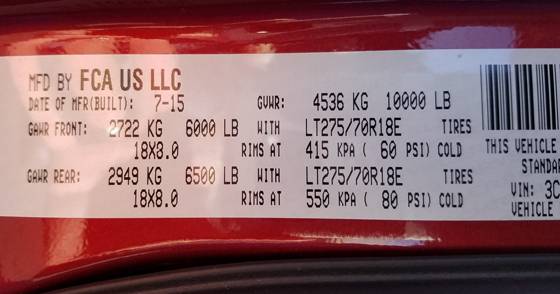
Despite what the GAWRs may add up to, the GVWR is the maximum total weight for which a vehicle is rated. That once again includes passengers, liquids (fuel, oil and coolant, etc.), cargo and the tongue weight of the trailer if you are towing. To find out if you are exceeding your GVWR, place all the wheels of the loaded tow vehicle onto a scale — and if you are towing, you need to do this with the trailer attached but without placing the trailer on the scale.
If we add the two GAWRs from the 2015 Ram, we come up with 12,500 pounds. If we look at the GVWR, it is only 10,000 pounds. That’s 2,500 pounds less than the sum of the two axle ratings. Manufacturers rate their vehicles for what the vehicle can consistently and safely handle, so although each axle can handle more than the truck is rated for, other components and systems may not be able to handle the sum of the gross axle weight ratings. These systems may include the powertrain, drivetrain, brakes, cooling system, suspension or other components. Probably more than in any other vehicle segment, a pickup is only as strong as its weakest link.
On the Trailer
The GAWR and GVWR can be found on trailer tags as well. Unlike motor vehicles, trailers do not have a standard location for these tags, but they will be on the trailer frame. The same cautions that apply to motor vehicles apply to trailers. The brakes, suspension, axles, bearings, tires, frame and other components are all designed to safely handle loads up to the maximum GVWR. It is unsafe to overload a trailer above its ratings.

One number that is not listed on a pickup’s door tag — and we’re not sure why — is the GCWR. This is the total weight of the vehicles connected together while towing: truck, passengers and its load, and the trailer and its load.
To measure GCWR, place the tow vehicle and any associated trailers on a scale, and get the readout for the total weight of all axles. Many scales are only large enough to pick up one axle, or two closely spaced, at a time. In that instance, take add the weight of all the axles of the tow vehicle and trailer after measuring them one at a time. To find out a vehicle’s GCWR, you often have to look in the owner’s manual. Much like GAWRs and GVWRs, the GCWR is not the sum of the GVWR and the maximum towing capacity of the tow vehicle. It also is not the sum of the GVWRs of the tow vehicle and attached trailer, even if the federal Department of Transportation requires commercial vehicles to be registered that way. This is done to protect the components of the tow vehicle.
Maximum trailer weight, another number usually found in the tow vehicle’s owner’s manual, is the maximum weight the tow vehicle can safely tow. Use caution here, as this is the max tow rating for an unloaded tow vehicle, which is rarely the case. When passengers and gear are added, as you might expect, the total tow rating decreases. To standardize how manufacturers rate vehicles for towing, SAE International created the J2807 standard, which all manufacturers have agreed to use. Trailer weight is measured by placing the trailer on a scale when it is disconnected from the tow vehicle. Trailer hitch receivers often have maximum trailer weight capabilities and maximum tongue weight ratings. Keep in mind that these ratings may not reflect the actual numbers of the tow vehicle. A receiver may have a higher or lower rating than the vehicle it is attached to, so always consult the owner’s manual to be sure you are within safe working limits. Remember to always use the lower of the two ratings as your limit.
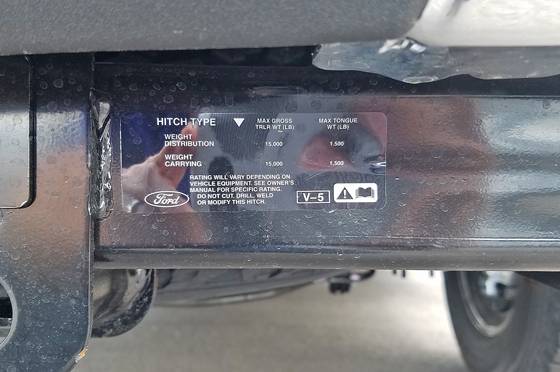
Trailer tongue weight, whether a gooseneck, fifth-wheel or traditional ball hitch, is the amount of weight that the trailer adds to a tow vehicle when attached. Tongue weights for conventional (bumper pull) trailers should not exceed 10 to 15 percent of the total trailer weight, while gooseneck and fifth-wheel trailers should be somewhere between 15 and 20 percent of the total trailer weight. This can be easily measured for conventional trailers with a scale ball mount or a tongue jack scale. For gooseneck or fifth-wheel trailers, it may be a little more difficult, but can be done by weighing the tow vehicle at a truck-stop scale when it is attached to the trailer — making sure the trailer axles are not on the scales — and then again without the trailer attached. The difference between those two numbers will get you pretty close to the actual tongue weight of the trailer.
All this is to say that if you plan on towing, make sure you do your homework and know what your rig is rated to carry and tow. The best way we know how to do that is to stay below your GVWR, GCWR and GAWRs.
Glossary
Gross axle weight rating
This is the maximum weight that can be carried by a single axle; it should be identified as either front or rear. This rating can be found on tow vehicles and on trailers. It can measured by placing all wheels of a single axle on a scale.
Gross combined weight rating
The maximum combined weight of the tow vehicle and all towed units or trailers. This includes all cargo, fluids, passengers and vehicles in the train. This can be checked by placing the tow vehicle and trailer(s) onto a scale, or if a scale isn’t big enough, then weighing each vehicle or axle individually on the scale and adding up the individual weights.
Gross vehicle weight rating
The maximum amount of weight that can be loaded on a vehicle; it should include the weight of the vehicle, all of its topped-off fluids, cargo, passengers and trailer tongue weight, if applicable. This is easily measured by placing all four (or six if you have a dually) wheels of the vehicle on a professional scale.
Tongue weight
Tongue weight is the amount of weight that a trailer places onto a tow vehicle through the hitch ball when connected. This can be measured in a few ways, but using a tongue weight scale or a ball mount with a built-in scale are the most common methods.
Trailer weight
This is how much a trailer weighs. This includes the weight of all axles and the weight on the tongue jack. The best way to measure this is to place the trailer on a full-length scale and disconnect it fully from the tow vehicle. Of course, you can also weigh the tow vehicle, then the tow vehicle and attached trailer, and subtract the weight of the tow vehicle to get the trailer weight.
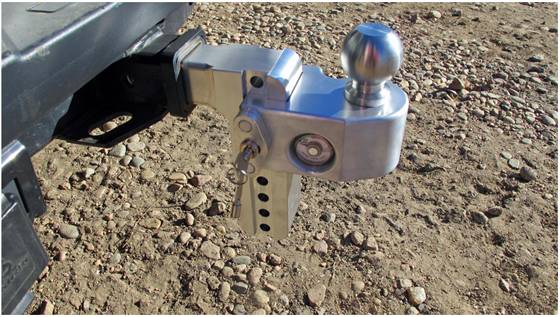
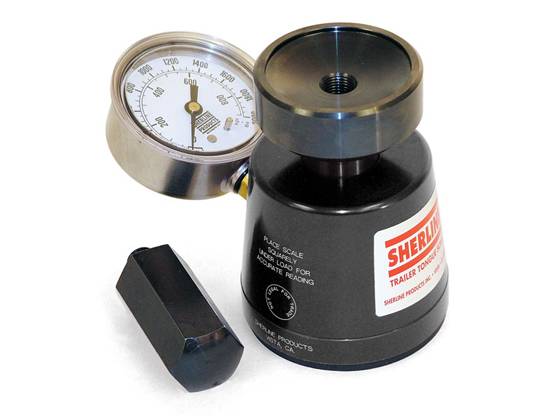
Cars.com’s Editorial department is your source for automotive news and reviews. In line with Cars.com’s long-standing ethics policy, editors and reviewers don’t accept gifts or free trips from automakers. The Editorial department is independent of Cars.com’s advertising, sales and sponsored content departments.
Featured stories
